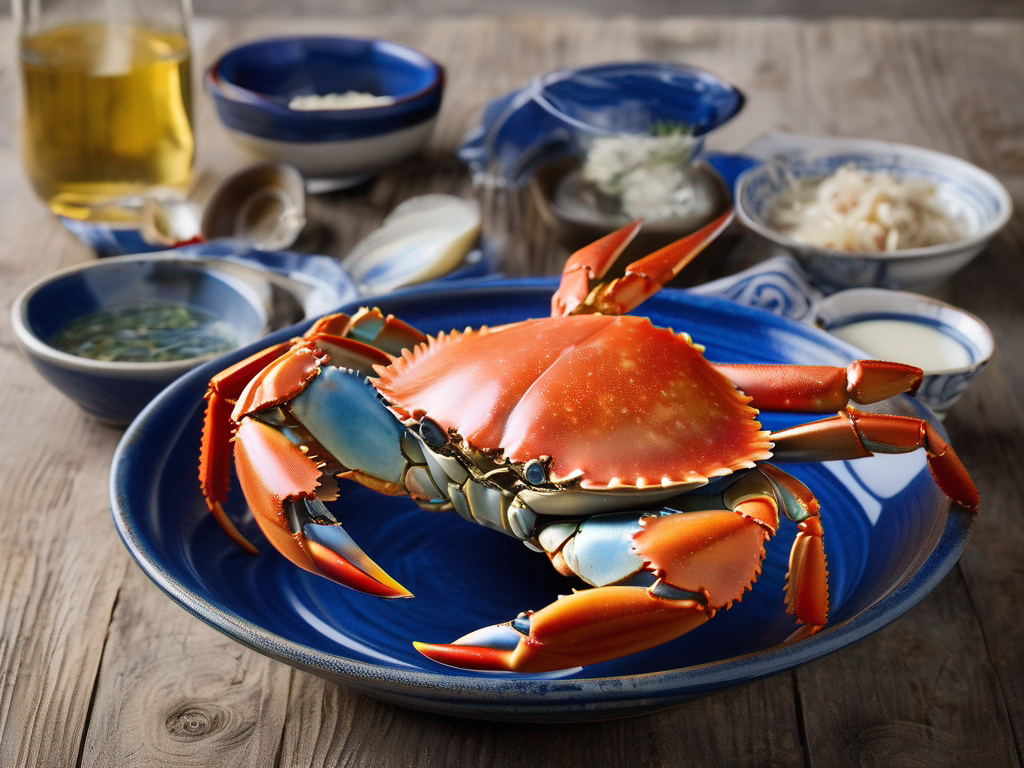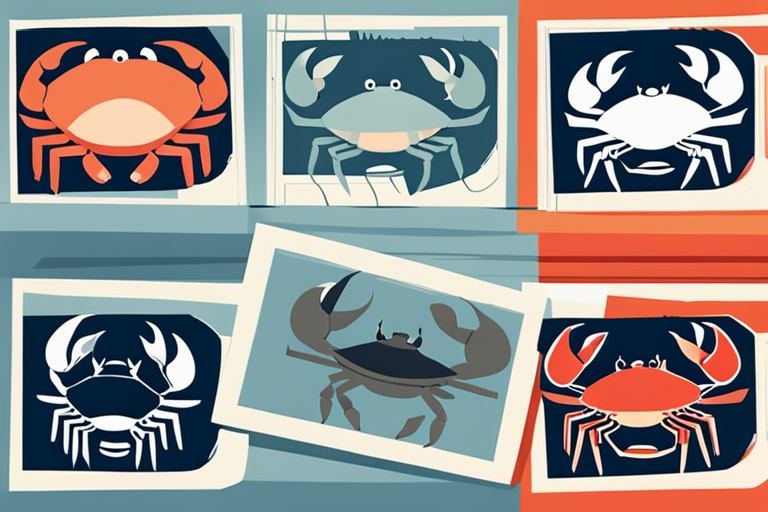
Is My Blue Crab Still Safe to Eat? How to Tell if Your Blue Crab Has Expired
Get Your Free Food Safety Cheat Sheet
30 most common foods with instant answers. Print it and stick it on your fridge—completely free!
Is My Blue Crab Still Safe to Eat? How to Tell if Your Blue Crab Has Expired
Blue crabs are a popular seafood delicacy enjoyed by many across the globe. Whether you're planning a crab boil or a fancy seafood dinner, it's crucial to ensure that your blue crab is fresh and safe to eat. In this blog post, we'll delve into the key indicators that can help you determine if your blue crab has expired. By understanding these signs, you can enjoy your crab dish with peace of mind, knowing that it's safe and delicious. (Blue crab)
How Long Does Blue Crab Last?
Blue crab, like any other seafood, has a limited shelf life. Proper storage and handling are essential to maintain its freshness and quality. Here are some general guidelines on how long blue crab can last under different storage conditions:
- Live Blue Crab: When kept alive in a cool, moist environment, blue crabs can survive for up to 2 days.
- Refrigerated Blue Crab: Cooked blue crab should be consumed within 3-5 days if stored in the refrigerator at temperatures below 40°F.
- Frozen Blue Crab: If properly frozen at 0°F or below, blue crab can last for up to 3 months without significant quality loss.
Signs Your Blue Crab Has Expired
1. Foul Odor:
- A strong, pungent fishy smell is a clear indication that your blue crab has gone bad. If the odor is overpowering and unpleasant, it's best to discard the crab.
2. Slimy Texture:
- Fresh blue crab should have a firm texture. If you notice a slimy or slippery feel when touching the crab, it's a sign of spoilage.
3. Discoloration:
- Check the color of the blue crab's shell and meat. Any unusual discoloration, such as dark spots or a yellowish hue, could mean the crab is no longer safe to eat.
4. Mold Growth:
- Visible mold on the surface of the crab is a definite red flag. Mold indicates microbial growth and spoilage, making the crab unsafe for consumption.
5. Excessive Shedding:
- If the blue crab's shell appears excessively shed or damaged, it could be a sign of deterioration. Fresh crabs should have intact, shiny shells.
How to Properly Store Blue Crab
To extend the shelf life of your blue crab and maintain its quality, follow these storage tips:
- Live Blue Crab:
- Keep live blue crabs in a well-ventilated container with damp newspaper or seaweed.
- Store them in the refrigerator or a cooler filled with ice packs.
- Cooked Blue Crab:
- Refrigerate cooked blue crab promptly after serving.
- Store in an airtight container to prevent contamination and odor absorption.
- Frozen Blue Crab:
- Place cooked blue crab in airtight freezer bags or containers.
- Label with the date and use within the recommended storage period.
Conclusion
Ensuring the freshness and safety of your blue crab is paramount when preparing seafood dishes. By being vigilant and observant of the signs of spoilage, you can avoid the risk of foodborne illnesses and enjoy your crab-based meals with confidence. Remember to follow proper storage practices and guidelines to maximize the shelf life of your blue crab. With these tips in mind, you can savor the delicious flavors of blue crab without any concerns about its quality. Enjoy your meal! (Blue crab)

Authoritative Food Safety References
These agencies and university labs inform every tip and health precaution we publish.
USDA FoodKeeper – Cold Storage Guidelines
Official refrigerator, freezer, and pantry timelines maintained by the U.S. Department of Agriculture.
Visit USDA FoodKeeperFDA Produce Safety Rule & Grower Guidance
Field-to-fridge handling practices that prevent contamination of fruits, vegetables, and leafy greens.
Visit FDA Produce SafetyCDC Foodborne Illness Prevention Hub
Surveillance-backed guidance on pathogens, symptoms, and steps to reduce foodborne illness risk.
Visit CDC Food SafetyUC Davis Postharvest Technology Center
University research detailing optimal storage atmospheres for produce after harvest.
Visit UC Davis PostharvestPenn State Extension – Home Food Preservation & Safety
Peer-reviewed extension bulletins on safe canning, chilling, and reheating practices.
Visit Penn State ExtensionHow can I tell if my blue crab is still safe to eat?
Can I eat blue crab that has been in the refrigerator for a few days?
How long can I keep cooked blue crab in the refrigerator?
Can I freeze blue crab for later consumption?
Are there any health risks associated with eating expired blue crab?
Get Your Free Food Safety Cheat Sheet
30 most common foods with instant answers. Print it and stick it on your fridge—completely free! Want more? Upgrade to the complete guide with 70+ foods.
Scan your food directly and get instant safety info using our AI-powered camera feature.